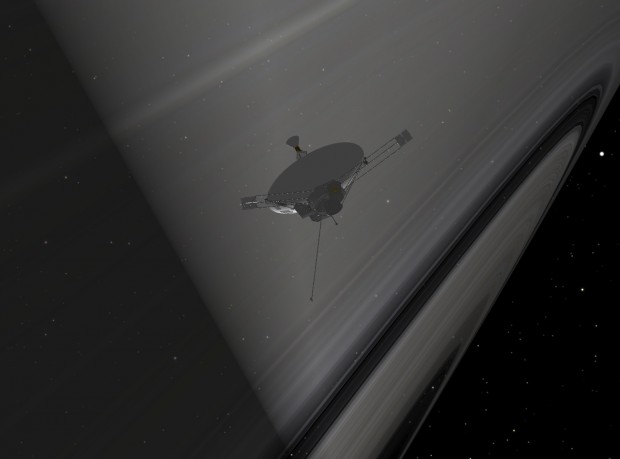
Launched in 1972 and 1973, the Pioneer spacecraft provided the first thorough observations of the distant reaches of the solar system; crowds mobbed museums and planetariums to see astonishing images of Jupiter’s Great Spot and the Rings of Saturn when the spacecraft encountered the gas giants in the late seventies. But as they passed the orbit of Pluto, the plucky craft with their gold plaques bearing messages to the stars have served up an unanticipated enigma: a miniscule but measurable shortfall in their expected momentum, a sunward drag on their headlong speed ten billion times smaller than the effect of gravity. But there it was, in defiance of all Newton and Einstein had taught.
Dubbed the Pioneer Anomaly, this discrepancy in the probes’ speed has goaded theorists to speculate bizarre new physics. Ideas have been legion, but facts have been hard to come by. Now, Jet Propulsion Laboratory scientist Slava Turyshev and software developer Viktor Toth may have unraveled the mystery of the Pioneer anomaly. They aren’t telling yet�but as Natalie Wolchover reports in a magisterial piece in Popular Science, their answer may hinge on temperature data from the craft themselves. It’s always been suspected that very tiny amounts of heat radiating out of the now-defunct power supplies may exert a tiny pressure against the momentum of the craft. The effect would be extraordinarily subtle; but in the drag-free environment of space at the astounding speeds at which the Pioneer spacecraft travel, it could add up to the anomaly.
It might seem disappointing to some that the puzzle of the Pioneer anomaly might turn out to be a simple mechanical effect of the crafts’ design, and not evidence of heretofore unknown physical laws. But consider this: Tosh and Turyshev have painstakingly modeled thirty years’ worth of data tracking the temperatures of 100,000 separate locations on the surface of the craft, each roughly the size of a washing machine with a backyard satellite dish rigged on top. That so much information could be gathered from spacecraft launched in the era of punch-card computing and now more than 7 billion miles away�well, it makes the universe of Einstein and Newton more than awesome enough.
 Gearfuse Technology, Science, Culture & More
Gearfuse Technology, Science, Culture & More


